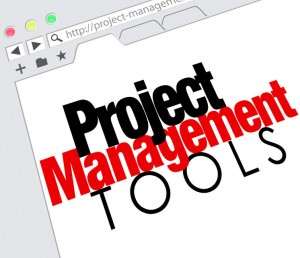
 Data Structure
Data Structure Networking
Networking RDBMS
RDBMS Operating System
Operating System Java
Java MS Excel
MS Excel iOS
iOS HTML
HTML CSS
CSS Android
Android Python
Python C Programming
C Programming C++
C++ C#
C# MongoDB
MongoDB MySQL
MySQL Javascript
Javascript PHP
PHP
- Selected Reading
- UPSC IAS Exams Notes
- Developer's Best Practices
- Questions and Answers
- Effective Resume Writing
- HR Interview Questions
- Computer Glossary
- Who is Who
Estimation Techniques for Project Scheduling
The world is moving fast, consequently the technologies which we are using also keeps improving day by day. So to maintain the pace of transforming technologies, we need to keep upgrading ourselves. Gone are the days, when Project Managers across the world use the traditional processes to estimate the Scope, Schedule, Cost and other project constraints to manage the project.
But these days, we have privileges to use many established tools and techniques which are evolved after years of research and practices. There are some proven techniques which can help the Project Managers to manage the projects in a more organized and predictable way.
Whether to build a software product or to construct a building, irrespective of the nature of work, the projects largely stands on four pillars – Scope, Schedule, Cost and Quality. Though most people only talk about these triple constraints but the fourth pillar ‘Quality’ also is as important as the other three constraints.
Let’s discuss a business scenario to get more understanding on the benefits of estimation techniques.
Business Scenario

Brend is working as a project manager in a leading E-Commerce company. He is currently handling a project whose release date is around the corner. Brend and his team are working hard to complete the project on time. The top management is paying special attention to his project as it is an important addition to their existing application to cater the festival rush.
The D-Day is approaching soon, but their work is still far away from completion. But when Brend looks the project schedule, he found that as per schedule the work should be completed by this time and the pre-release activities should be started. But that is not happening.
The Solution

Brend tries to figure out the root cause of the problem. He pulled up the project schedule, network diagrams and other artifacts and sit with the team to find out the culprit. As per their estimation, the works should be completed by this time. But it is still far way. Then, where is the problem?
The problem is, though Brend and his team estimated the activities at the planning stage, but they didn’t use any established techniques. They have estimated based on their previous experiences of similar kind of works, which is just a flavor of analogous technique. If they would have used proper estimation techniques such as Parametric Estimation technique or other, then they could have set a realistic release date to complete the work.
The estimation of project schedule requires lot of efforts. If we estimate it incorrectly or ignore any important activity while doing the estimation, then that may put us in trouble in the later stage and may force the project to miss the deadline. There are many tools and techniques which we can use for accurate estimation, such as Analogous Estimation, Parametric Estimation and Three-point Estimation.
Let’s discuss these estimation techniques in detail.
Analogous Estimation Technique

The Analogous Estimation Technique estimates activities duration based on the historical data of similar projects. It uses the parameters of previous projects or activities of similar nature or technicality and applies the similar treatment to the current or future projects. The advantage of Analogous Estimation is, it is less costly and less time-consuming, but it is also less accurate. The accuracy of this type of estimation is lower than the Parametric Estimation or Bottom-Up Estimation.
For example, if a particular activity in the previous similar project has taken X number of days, then the same X period of duration can be applied to the same activity in the current project.
Parametric Estimation
Parametric Estimation technique uses an algorithm to calculate cost and duration based on the historical data and other project variables. A statistical relationship between the historical data and other variables needs to be established and based on that we can calculate the required duration and cost of that activity.
This technique is one of the most accurate techniques to estimate the duration and cost of the project.
Examples
As a project manager, you are assigned to build a flyover. So while doing the estimation, you have decided to use the parametric estimation technique for some of the activities, such as the construction of ten pillars as required in the first phase of the project.
We know that the parametric estimation technique requires a statistical relationship between the historical data and other variables to calculate the duration. So as part of historical data gathering, you got the information that construction of each pillar requires 10 people to work for 25 days.
Based on that information you can calculate the duration, as follows –
- Total duration of constructing of all the pillars = Time taken per pillar * Total no. of pillars
- Total duration = 25*10= 250 days
Three-Point Estimation
While doing the estimation, we carefully estimate the duration of each activity, but we never know the future. In case of any uncertainties, the project schedule can be derailed. So, to deal with those uncertainties and risk, we need to take the help of three-point estimation which is also referred as PERT- Program Evaluation and Review Technique.
The Program Evaluation and Review Technique use three types of estimations:
- M – Most Likely: The realistic or ideal situation, all the required resources will be assigned and can achieve the expected productivity
- O – Optimistic: Estimation based on best case scenario
- P – Pessimistic: Estimation based on worst case scenario
Based on the above assumptions, the expected duration can be calculated using two basic formulas.
- Triangular Distribution – (O+M+P)/3
- Beta distribution – (O+4M+P)/6
Reserve Analysis
Basically, there are two types of reserves, Contingency Reserve and Management Reserve to deal with any uncertainties during the project life cycle.
Contingency Reserve
Contingency reserves are included within the duration of schedule baseline. It is estimated by considering the “Known-Unknowns” or identified risks.
Management Reserve
Management reserves are not included in the project baseline but considered in overall project duration. It is intended to deal with the “Unknown-Unknowns” or unidentified risk that can affect the project.

